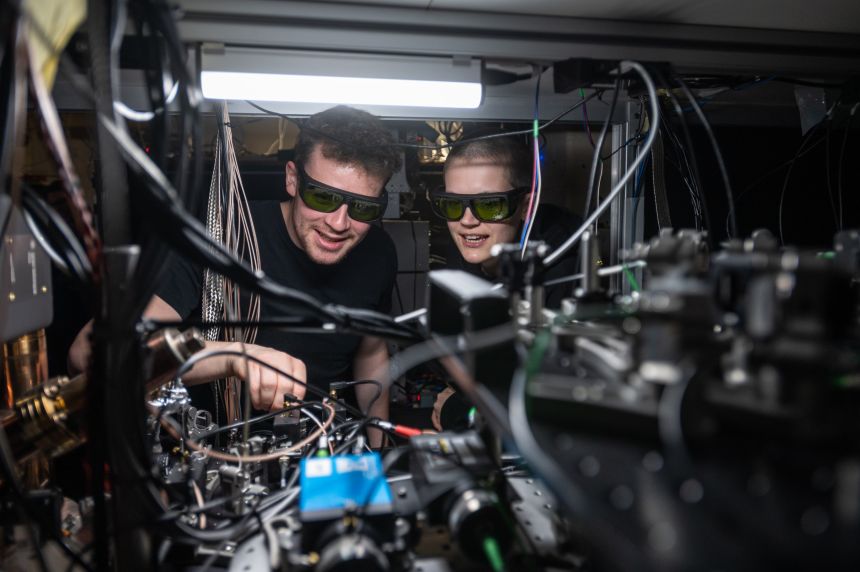Oxford's advancement in quantum transfer paves the way for practical quantum computing.
Innovations and Initiatives Innovations and InitiativesPosted by NewAdmin on 2025-02-11 08:40:59 |
Share: Facebook | Twitter | Whatsapp | Linkedin Visits: 77

A remarkable development in the realm of quantum information transfer has pushed forward efforts to make advanced computational systems more practical. Scientists at a leading institution have demonstrated a novel method of linking distinct processing units through an optical communication system.
This innovation effectively integrates them into a unified computational framework, addressing a crucial limitation in the advancement of next-generation computing: expansion.
Scaling up computing units to a level where they surpass the capabilities of conventional high-performance machines has long been a challenge. Constructing a powerful system requires an enormous number of computational elements, which remains impractical due to the space and complexity involved in housing them within a single platform.
Instead of increasing the number of processing elements in a singular unit, researchers have introduced a distributed model. By interconnecting several smaller computing modules via high-speed optical links, they have demonstrated the feasibility of expanding computational power without the need for a physically larger system.
At the heart of this accomplishment is a method that enables seamless information exchange between independent modules without direct physical interaction. By leveraging atomic-scale carriers of information and connecting them through specialized communication channels, researchers have achieved a level of integration not previously accomplished.
While previous studies have demonstrated basic information transfer, this marks the first instance where computational operations have been successfully executed across multiple interconnected processors. This advancement effectively enables a distributed computational structure that functions as a cohesive whole.
Beyond its immediate implications, this research lays the groundwork for a secure and interconnected network of advanced computing units. By applying these principles on a broader scale, multiple processing systems could be linked over vast distances, forming a robust infrastructure for complex calculations, secure communications, and enhanced data processing.
To illustrate its capabilities, the team has implemented an algorithm designed to optimize search processes, significantly reducing computational time compared to conventional methods. This success underscores the potential of interconnected computing units to perform tasks that traditional systems would struggle to achieve efficiently.
Despite this progress, further refinements in both theoretical and applied research are necessary to make large-scale computational networks a reality. Nonetheless, this milestone represents a significant step toward achieving high-performance computing architectures capable of transforming multiple industries.
Search
Categories
Recent News
- Bihar's Top Cop Opens Doors to Public Grievances
- Hyderabad Gears Up for Presidential Visit: Traffic Diversions Announced
- Hyderabad Expressway Gridlock: Three-Car Pile-Up Causes Chaos
- Hyderabad Gears Up: Security Measures for Presidential Visit
- Hyderabad's Rs 23 Lakh Scam: Fake Trading App Dupes Investors
- Pinkathon Hyderabad: Empowering Women, One Step at a Time
- Hyderabad's Drug Supply Chain Unravelled
- Hyderabad's New Year's Eve: Safety Meets Celebration
Popular News
- Navigating IPO Market Dynamics Amid Volatility and Regulatory Changes
- Innovative Green Practices and Environmental Initiative
- Massive Worldwide Microsoft Outage Disrupts Multiple Sectors
- తెలుగుదేశం పార్టీ - పేదరికాన్ని నిర్మూలించడంలో వాగ్దానం
- Universities Embrace Remote Learning Technologies Amidst Ongoing Pandemic